
- By María Dueñas
- ·
- Posted 21 Mar 2024
Advanced TDD learning path
If you have a lot of experience implementing TDD, your learning plan should focus on deepening your understanding of advanced principles, exploring..
Evolutionary Database Development, as coined in Martin Fowler’s book Refactoring Databases, is a concept whereby the design of the database is not done upfront, but instead is done in a way that evolves as the software that is relying on the data store does. In order to have flexibility and to allow changes in the database to be made safely; you need to have a test suite to run and check for regressions. In this post we will have a look at a testing framework for Microsoft SQL Server databases.
Get started installing SQL Server Express . SQL Server Express is a free lightweight version of Microsoft’s SQL Server database.
SQL Server Management studio provides us with a powerful user interface to access, manage and configure our MS SQL database server. If you don’t already have it, install it. Please note this will take some time.
We are going to use the tSQLt unit testing framework to test our Microsoft SQL Server database. We first need to get the download from the official website.
The tSQLt open source framework allows us to run our tests within transactions which makes our tests independant and takes care of cleaning up after it runs. The framework also gives us the ability to isolate our tests through fake tables and stored procedure (SP) spies.
Once you have SQL Server Express up and running, and MSSQL Management Studio installed, open the latter and connect to your server.
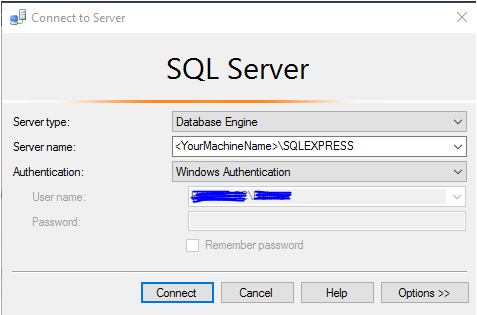
The tSQLt team provides a quick start example database and a set of tests to help developers get started quickly on how the framework works. Let’s try the example together. First unzip the tSQLt folder you downloaded, and make sure that CLRs are enabled on your development server. Enabling CLR integration allows us to run managed code, such as C#, on our SQL Server database.
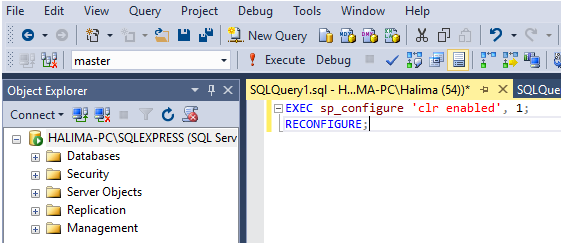
Open the Example.sql file that you will find within the unzipped folder, and execute it in your database server. This will create a test database named tSQLt_Example.
Once your database is created, open a new query window on that DB and run the following command: EXEC tSQLt.RunAll This is a command to run all the tests. You should see a failing test in the result screen:
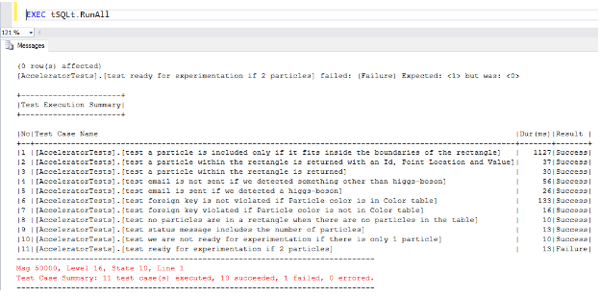
Test case number 11, named "test ready for experimentation if 2 particles", is failing. Let’s open the file and see what’s wrong with it; we will need to navigate to the stored procedures folder to find the test.
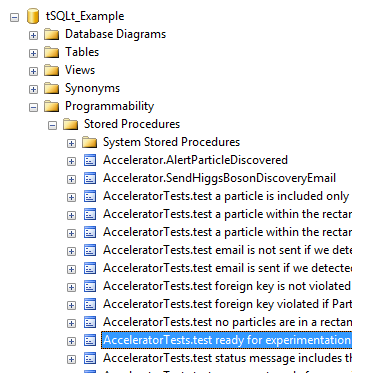
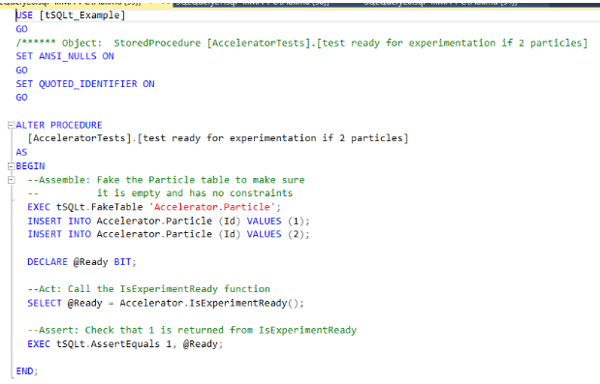
The failing test is calling the IsExperimentReady function and checks that it returns 1 when the particle table has two particles. Looking at the function, it seems that it is not counting the number of rows in the Particle table, and it is not doing the right checks.
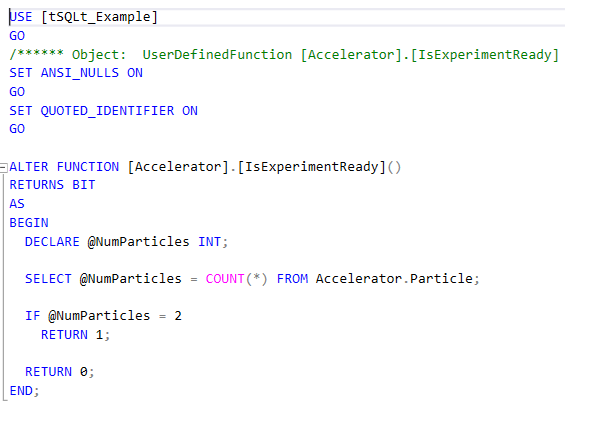
Once we’ve solved the issue, we can run the tests again and see that they are all passing now.
Tests in the tSQLt framework are run within transactions. The function we are testing relies on the Particle table to determine whether the system is ready for experimentation. Looking at our test here, we can see that we are creating a fake table of the Accelerator.Particle in which we will insert two rows.
If we have closer at look at the tSQLt.FakeTable stored procedure, we can see that it is renaming the original table we are faking, and copying its structure into a new table of the original name without applying any of the constraints. Then we run the test by calling the function under test, knowing that it should use the table we just faked. After the test has run wrapped inside the transaction, this transaction is rolled back. This will revert all the changes made to the mocked table. The test results that were stored in temporary fields are then saved in a test result table.
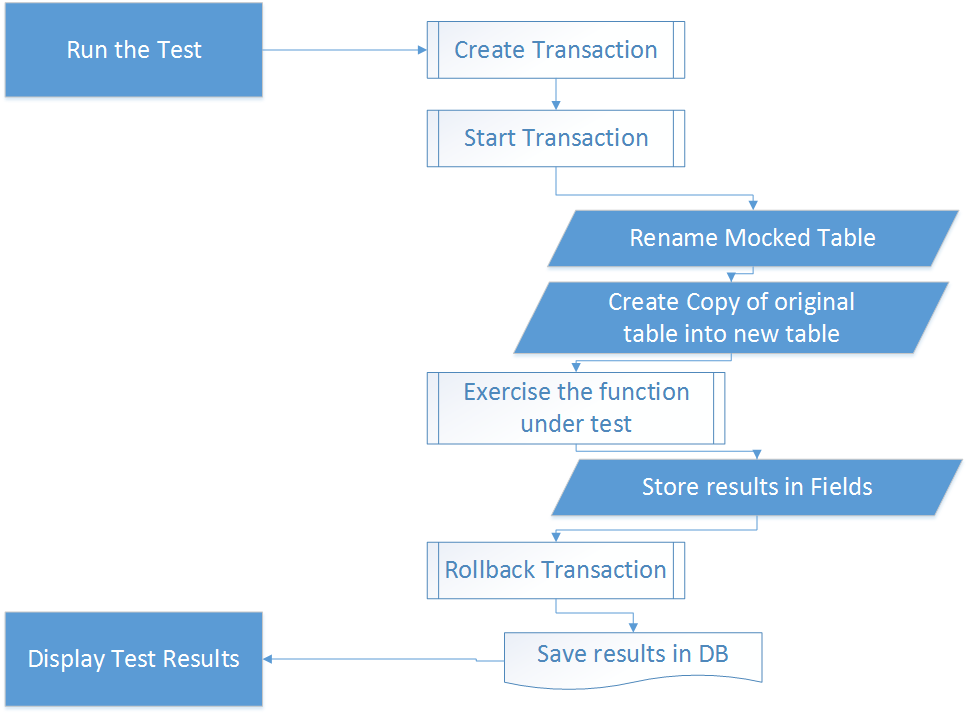
In this first blog post we learned about database testing, and how the tSQLt testing framework works. In the next post, we will go beyond the quick start example and see how to approach legacy transact-SQL, implementing tests into an existing database.

If you have a lot of experience implementing TDD, your learning plan should focus on deepening your understanding of advanced principles, exploring..

For a developer with an intermediate level in Test-Driven Development (TDD), the goal is to deepen understanding of advanced principles, refine..

Matheus Marabesi, a software craftsperson at Codurance, delves deeply into the list of 22 TDD anti-patterns compiled by James Carr. Through..
Join our newsletter for expert tips and inspirational case studies
Join our newsletter for expert tips and inspirational case studies